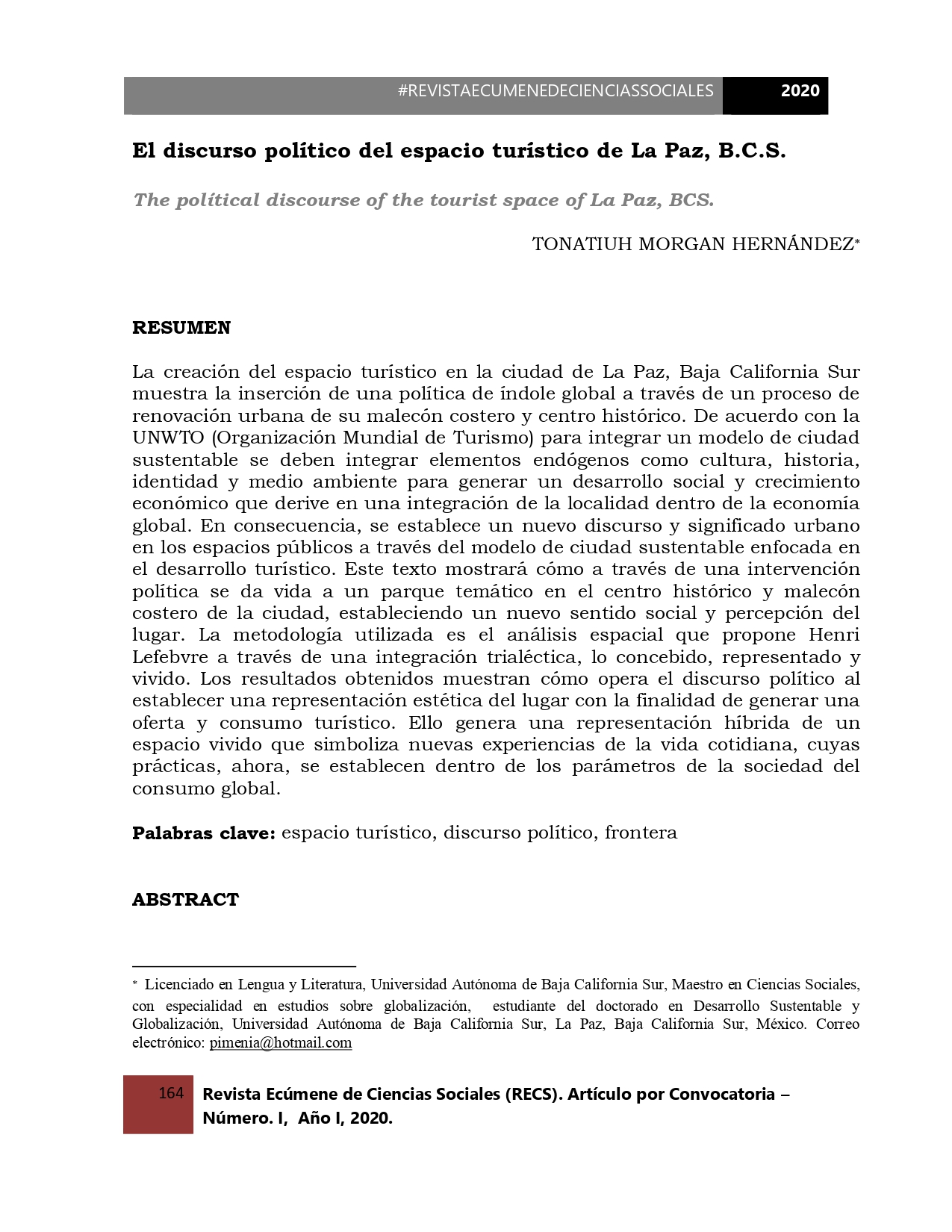Abstract
The creation of the tourist space in the city of La Paz, Baja California Sur shows the insertion of a global policy through a process of urban renewal of its coastal pier and historic center. According to the UNWTO (World Tourism Organization), to integrate a sustainable city model, endogenous elements such as culture, history, identity and environment must be integrated to generate social development and economic growth that results in the integration of the locality within the global economy. Consequently, a new discourse and urban meaning is established in public spaces through the sustainable city model focused on tourism development. This research seeks to show how through a political intervention a theme park is brought to life in the historic center and coastal boardwalk of the city of La Paz, Baja California Sur, which establishes a new social sense, and a different perception of the place. . The methodology used is the spatial analysis proposed by Henri Lefebvre through a trialéctic integration, the conceived, represented and lived. The results obtained show how the political discourse operates by establishing an aesthetic representation
of the place in order to generate tourism supply and consumption. This generates a hybrid representation of a lived space that symbolizes new experiences of daily life, whose practices are now established within the parameters of the global consumer society. The tourist space is a socio-cultural frontier that re-organizes, integrates and expels the various social elements that are not integrated according to the codification patterns established by tourism and consumption practices.

This work is licensed under a Creative Commons Attribution-NonCommercial-ShareAlike 4.0 International License.

